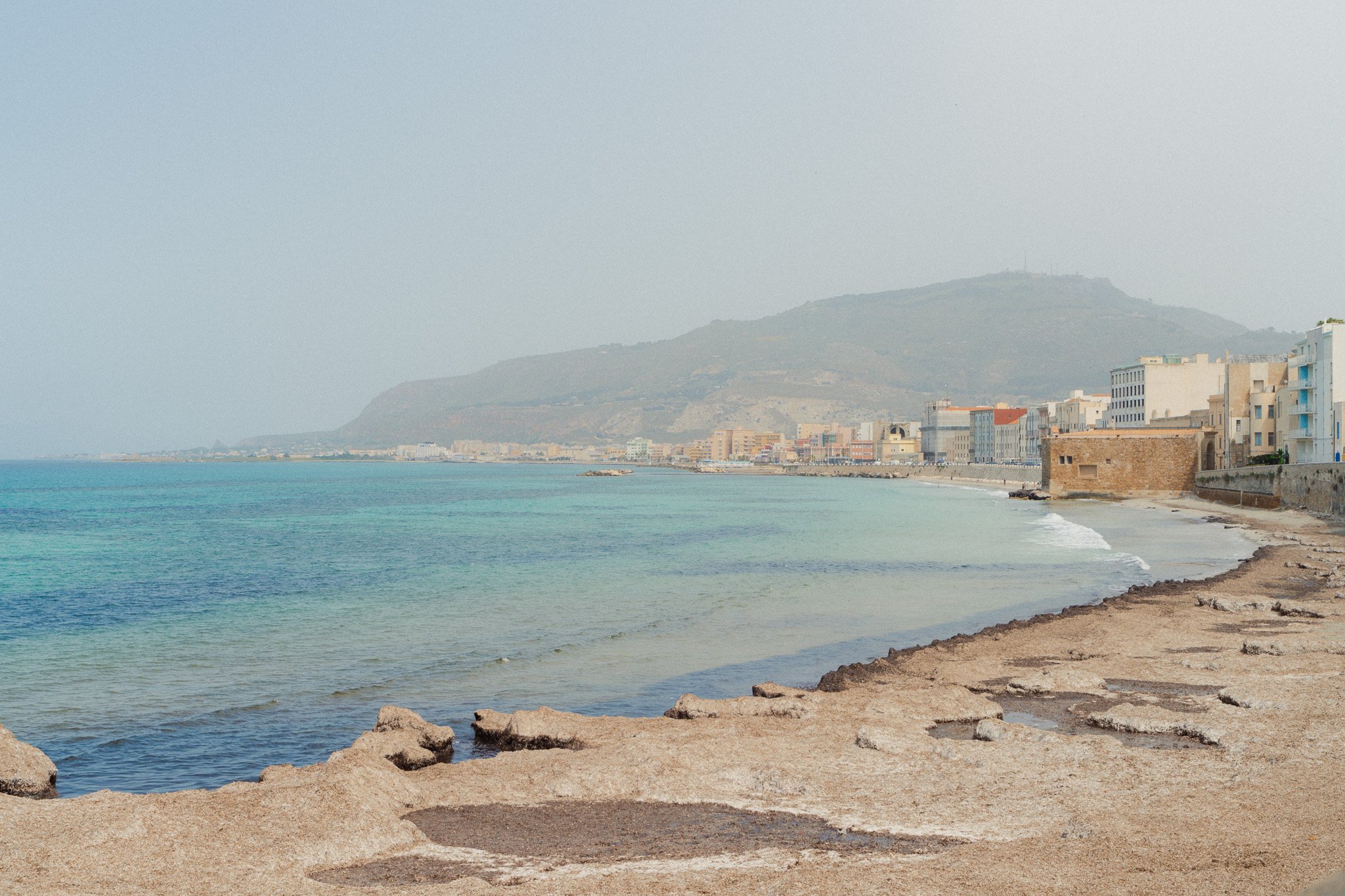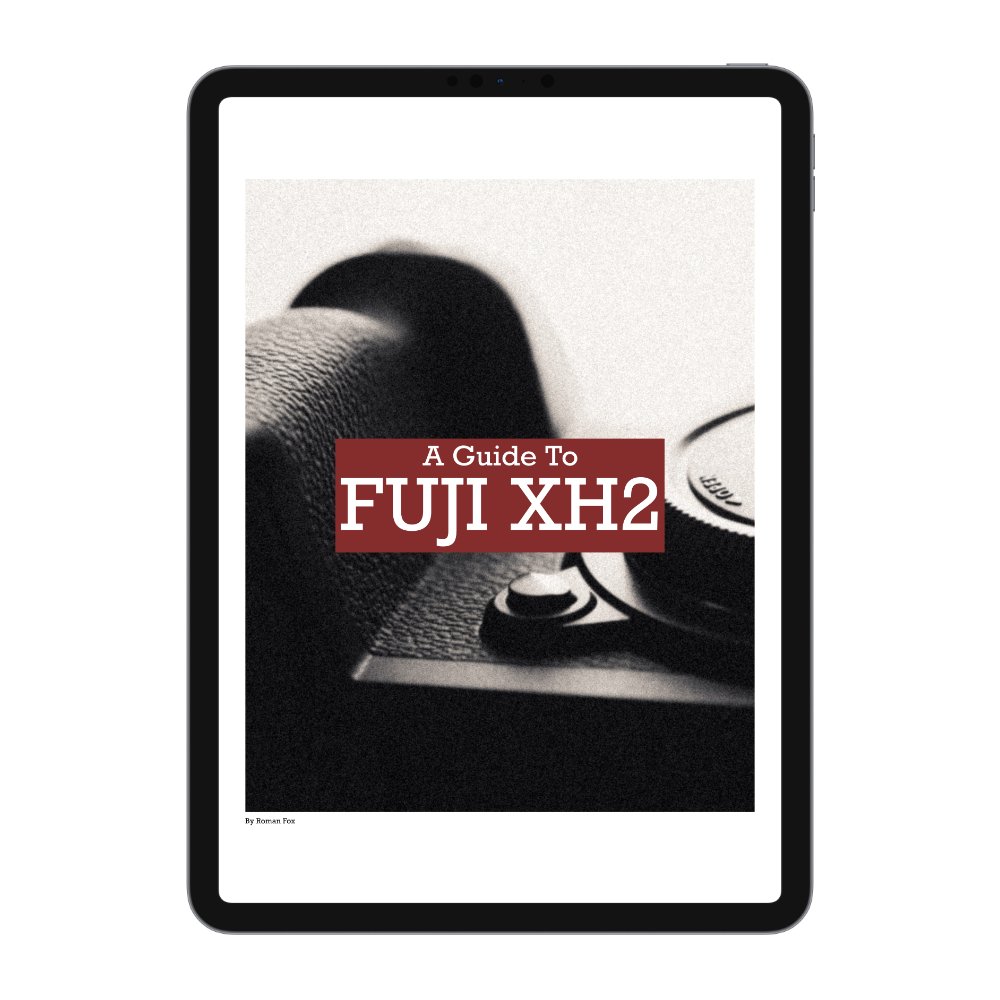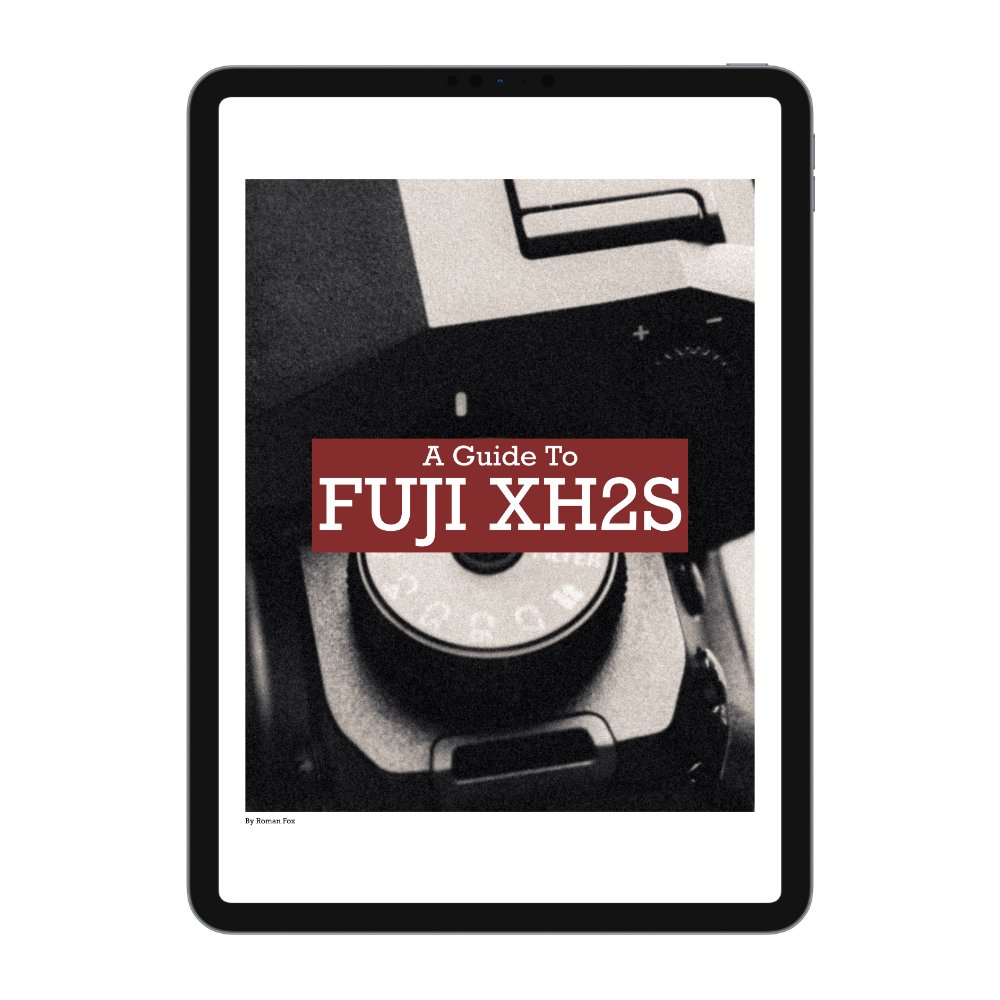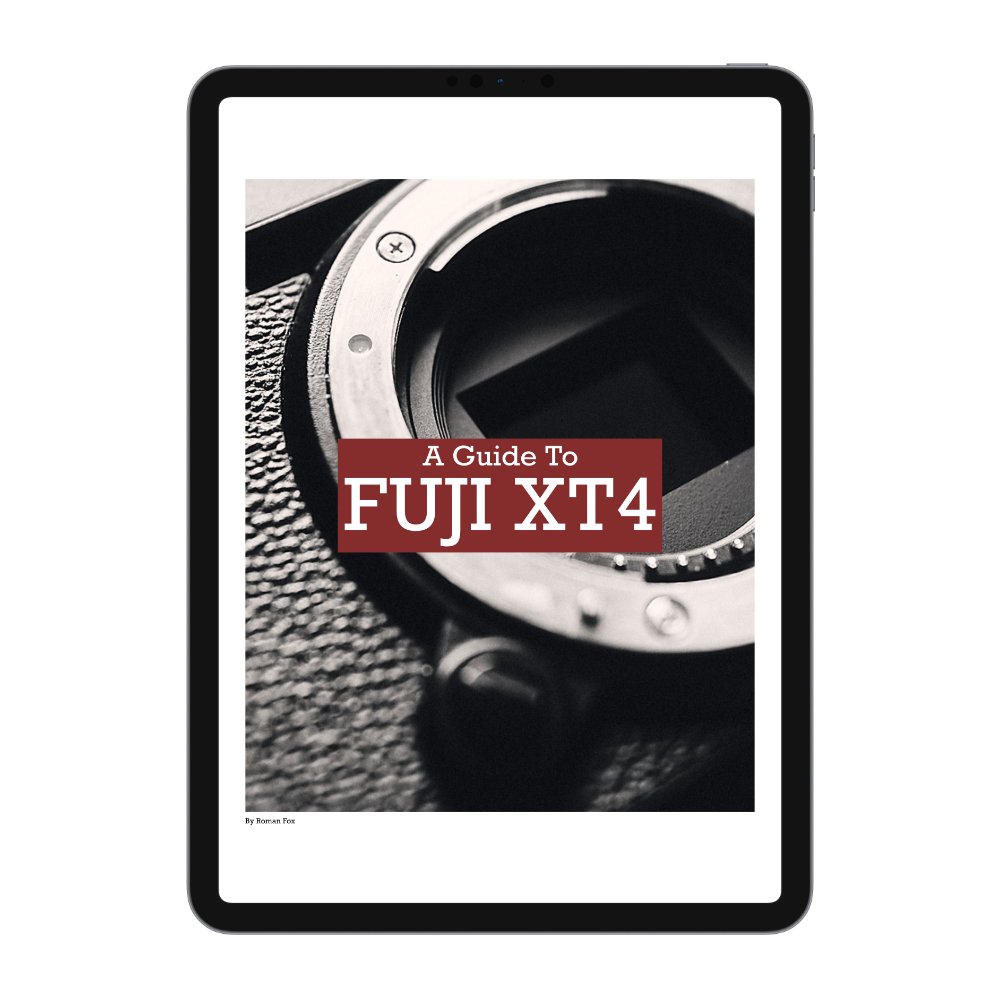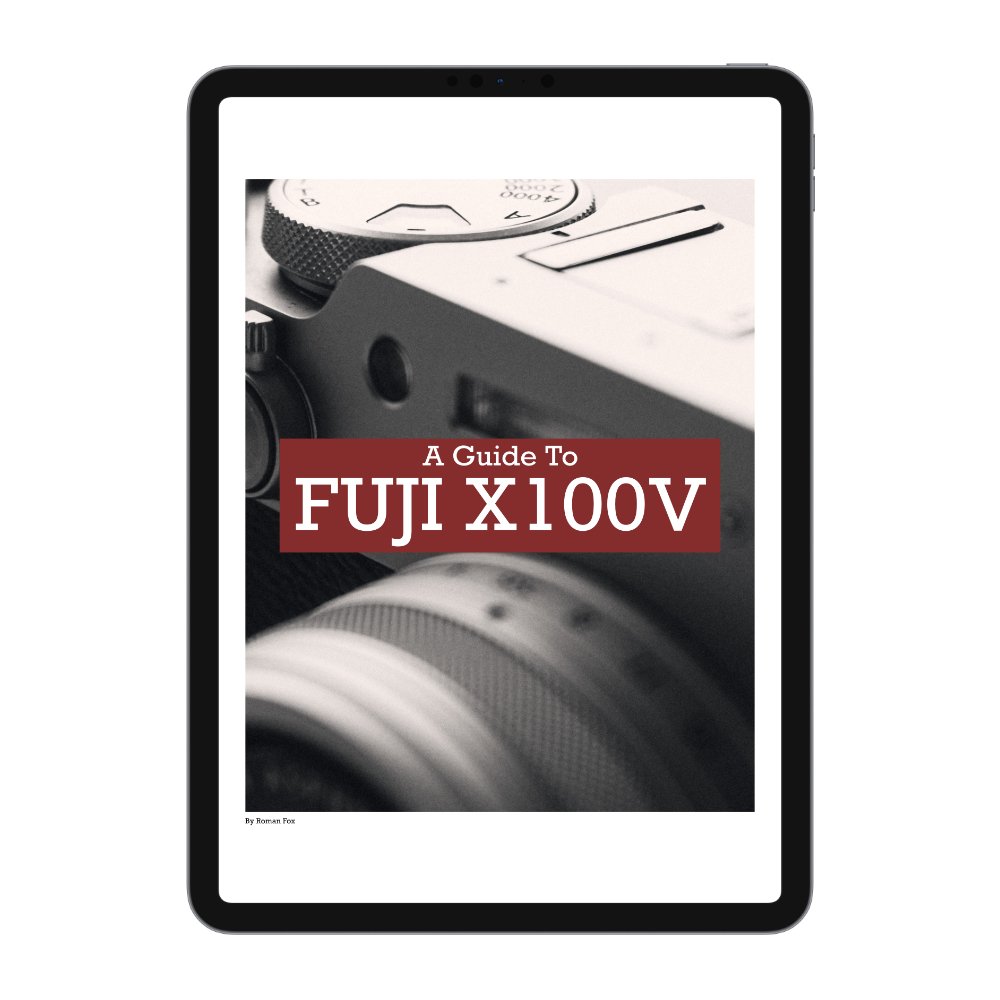The Best Sicily Road Trip - Italy Travel Guide
In this blog, I will share with you a fantastic two-week road trip across Sicily. It will cover the two major cities, Etna, seaside towns, and beautiful mountain-top villages. I will be sharing some of my photos to complement the text throughout the blog; however, if you wish to see all 300+ shots from the trip, please check out the digital photo zine below. These products allow me to keep this blog ad-free for you.
Route Overview
Day 1-2 - Palermo
Day 3 - Drive to Scorpello
Day 4 - Segesta Archaeological Park, Scorpello, San Vito Lo Capo
Day 5 - Marsala, Trapani & Erice
Day 6 - Cefalu & Drive to Etna
Day 7 - Rest Day
Day 8 - Climb Etna
Day 10 - Taormina & Castelmola
Day 11 - Syracuse & Noto
Day 12 - Savoca & half rest day
Day 13 - Drive to Catania
Day 14-15 - Catania
Duration & Time of Year
After some research, we decided to go in April for two primary reasons: weather and crowds. We had daily temperatures between 16C and 24C, which were perfect for exploring. If you want to go to the beach and swim, maybe wait till the second half of the month. During our two-week stay, about 80% of the days were sunny, with the only rain coming overnight. As for crowds, we didn’t come across anywhere that felt overcrowded, even on weekends.
In total, our trip was 15 days excluding travel, and while it was enough, I would have added an extra 1-2 days for going to the beach. Of course, this can be done in less time if you’re happy to be out sunrise to sunset without rest; however, given our schedule already felt tight, I can’t imagine squeezing it down would be very enjoyable.
Driving Tips
In no specific order, here are some tips based on my experience driving across Sicily:
When selecting your hire car, make sure to get the full insurance that removes liability for all damage. You can be the most experienced and careful driver; however, many others on the road are not. On multiple occasions, people tried to sneak through gaps and clipped my mirrors, resulting in scratches.
When selecting the car type, I would go for the smallest possible car. Many roads can be extremely narrow. We had a small hatchback (MG), and I wouldn’t want to have something bigger, especially in cities and mountain roads.
Google Maps is more accurate and reliable than Apple Maps. A few times, Apple Maps took us down dead-end roads, tried to route us the wrong way down a one-way street, and even suggested a road that physically didn’t exist. We also found discrepancies in the locations of hotels and restaurants on Apple Maps. With Google, we didn’t have any issues.
The roads can be uneven and full of potholes, especially in the countryside.
Some motorways have tolls, so always have some coins in the car.
If you’re coming from the UK, Germany, or any other country which has a higher standard of driving, you might be shocked by some of the driving style here. While I didn’t have issues, I lost count of how many times people overtook on blind bends, tailgated, cut you up, or tried to bully you to drive faster than the speed limit.
While you can park on the street, I always sought out off-street parking to avoid fines and damage to the car. Most allowed you to pay by card; however, always have plenty of coins just in case.
In most cases, the duration Google Maps suggested to complete a drive was about 30-45 minutes faster than reality. The drive always took longer than the ETA.
Almost every city has a ZTL zone where you’re not allowed to drive through. In most cases, the ZTL zone is clearly marked and is the very central part of the old town. Some people can still drive there, but it’s most likely locals. ZTL zones are camera-patrolled, so if you drive into it, expect a fine. Most large car parks are located outside of the ZTL zones.
I suggest parking just outside the town centre and walking in. It might only take you 15-30 minutes, but it will save a lot of headache.
When parking your car anywhere, never leave anything on show to avoid a smashed window. This is more for bigger cities such as Palermo.
Make sure to have plenty of water and some food in the car. Often we’d turn up at a supermarket that’s open on Google, but shut in real life.
Cost
The most expensive single cost of the trip will be the hire car. Prices vary drastically, but we paid around £1000 for a small hatchback with full insurance. If I hadn’t gone for the extra insurance, I would have only paid around £650; however, I would then be liable for all damages regardless of fault. This would have meant that I’d need to pay the excess for damage to the mirror (from someone clipping it), which would have totalled not far off the full insured price. When it comes to accommodation, I found the cost of apartments to be much more reasonable than hotels in Palermo and Catania. While I do my utmost to stay in hotels instead of apartments, in this case, the price difference simply couldn’t be justified. Outside of cities, we stayed in a holiday resort on the west side and a vineyard B&B on the east. In total, I spent around £2000 on accommodation; however, since I was travelling with my mum, I needed two rooms. If travelling with a partner, this cost will be significantly reduced. Despite covering over 1300km, I only spent around £100 on fuel. Food and drink were generally pretty affordable, with an average cost of a meal being £10-£20 depending on where you are.
Other Useful Tips
I suggest downloading maps and translations for offline use on your phone. Even though reception is good, you don’t want to get caught out. Always have at least 50 EUR in cash on you. In some regions, we were told tap water is okay to drink; in others, we were advised to stick to bottled. If flying out of Catania, sit on the left side of the plane for views of Etna. Generally, we felt very safe everywhere, including Palermo. With that said, pickpocketing and petty theft can occur. To avoid falling victim to that, I ensured all my belongings were in a small sling around my chest and not in my pockets.
Photography
My main camera set-up was a Sony A7RV with a 24-50 f/2.8 zoom. This was used for 95% of all photography. For times where I needed more reach, I had a small 90mm f/2.8 Sigma lens. At no point did I feel I needed a longer or wider focal length. One piece of gear I did end up using for photography is a small tabletop tripod. Originally, I only got it for video; however, when I needed to take a long exposure of Etna erupting, that tripod saved the day. Attitude to photography was overall positive, and Italians would let you know very quickly if they didn’t want a camera around. I never had any altercations or issues.
Palermo
The trip starts in Palermo, the biggest and busiest city in Sicily. The reason it’s the first stop is because of easy flight access, and it’s better to do the most intense location first. In total, I allocated two full days here, and in my experience, I found it enough. We stayed just outside the centre; however, if I were to return, I’d stay closer to the market.
Market & Old Town
The first day started with a visit to the famous Ballaro Market. It’s a large market catering to locals for fresh produce, and tourists for some authentic street food. It’s busy, loud, chaotic, and very Italian. At times, it will be impossible to get through due to the sheer quantity of people. Other times, you will be overwhelmed with smoke coming from street food vendors, and from time to time, your hearing will suffer from all the shouting. It’s truly amazing and was my favourite part of the city. I suggest visiting as early as possible so you can see it when things are a little quieter and it’s mostly locals buying their groceries. Then stay for when everyone turns up for a more lively atmosphere.
After the market, I would spend the rest of the day getting lost in all the small streets around the centre of town. There are so many little areas and locations that are a two-minute walk from the high street, yet are without tourists. There isn’t any specific street I can recommend, as honestly I was not keeping track of them; just walk towards anywhere that looks interesting and go from there. While I’m sure there is even more outside of the centre, we didn’t venture much further than a 20-minute walk from the middle of town. If this is your first time visiting Palermo, you might be taken aback by how much rubbish, graffiti, and dirt there is. Don’t let it put you off as ultimately, this city has a wonderful charm once you can see past the mess.
Cathedrals, Churches, and Museums
The second day is reserved for cathedrals, churches, and museums, something Palermo has in spades. I would suggest first going to the Royal Palace, called Palazzo dei Normanni. Go there as early as you can to avoid the lengthy queues. We got there at 8:30 am and walked right in. By 11:00, there was a very long line.
Once you’re done with the palace, head over to Palermo Cathedral located a few minutes’ walk away. While the Cathedral and accompanying museum is amazing to explore, my personal highlight was the rooftop offering great views of the city.
Assuming you explored each place fully, you will now be ready for lunch. The place I recommend is a five-minute walk from the cathedral and it’s called La Galleria. It was so good we went twice.
After lunch, head over to the three churches located next to each other: Church of St Mary, St Cataldo, and St Catherine. Matter of fact, that entire area is full of amazing architecture. We spent a few hours exploring that neighbourhood before slowly heading back.
West Sicily
Hotel
We stayed in Faraglioni Residence located just outside Scorpello. It was a gated collection of small villas with a reception, washing facilities, pool, and parking. It’s a perfect place for families and a great base from which to explore the surrounding areas. There’s a great beach, supermarket, and restaurant 2 minutes down the road.
Segesta Archaeological Park
This is a huge park located near Scorpello. While the Segesta is the main attraction, don’t forget the open-air theatre that’s on top of a mountain. It’s an easy 20-30 minute walk up, but you’re rewarded with one of the most spectacular views. You will also find little paths shooting off into different directions that are worth exploring. Be mindful that it’s VERY hot here with zero shade and nowhere to get water (other than the main ticket office near the car park). We spent about 2-3 hours here.
Scorpello
This is a small village located a stone’s throw away from Segesta. It’s very picturesque and seems like a wonderful place for dinner. For us, it was lunch, so an ice cream was sufficient. We spent about an hour here as it’s very small.
San Vito Lo Capo
This is a great seaside town not far from Scorpello. It offers an amazing beach, lovely town, and a harbour. I suggest walking up to the lighthouse and all along the beach to see everything. We spent about 2-3 hours here.
Marsala
This is a slightly larger town located on the coast. While the town is bigger, the most interesting part is pretty small. We spent about an hour here walking around. While we didn’t regret coming, if we were on a tight schedule, we would have removed it from the list.
Trapani
Get ready for some copy and paste, because the same applies here. This is a slightly larger town located on the coast. While the town is bigger, the most interesting part is pretty small. We spent about an hour here walking around. While we didn’t regret coming, if we were on a tight schedule, we would have removed it from the list.
Erice
This was one of the biggest surprises of the trip and a place we would gladly return to. Located above the clouds, the small village of Erica offers a very unique visiting experience compared to the seaside towns. The cobblestoned streets will take you all round the village, and I suggest taking any street you see and following it to the end to see what you will find. We spent at least an hour doing this and getting lost. After that, head to Torri del Balio castle. From there, you can have amazing views above the clouds. In total, we spent two hours in Erice, but that was due to time constraints. If we could, we’d drop Marsala or Trapani and spend another two to three hours in Erice.
Cefalu
This small seaside town is located on the other side of Palermo. On our plan, we drove there on the way to the east side; however, if I were to do this trip again, I would do it differently. Instead of driving there, I would stay in Palermo an extra day and take a train down for the day. Not only will this save time and hassle, but it will also allow you to do everything Cefalu has to offer. During our visit, we only had a couple of hours, so we resorted to exploring the city and the beach. If we had more time, we would have also done the hike to the top of the cliff.
East Sicily
Hotel
For the east side of Sicily, we stayed in Dimora Dell Etna B&B. It is one of the most memorable places we stayed for three reasons. First of all, it’s a vineyard that covers a large area. Secondly, it’s the wonderful host and the feeling of being at home. Many times, we didn’t even shut the doors to our rooms because we forgot we were in a ‘hotel’. The final reason this would go down as one of the most memorable stays is because my balcony had a full view of Etna. Given that Etna can release some pressure now and then, we managed to get an eruption on our final night.
Etna
Etna has its own weather system and you will need to be very flexible should you wish to go to the top. If you wake up and the weather is clear, you need to drop all your other plans and go to Etna. From the hotel, it was a relaxing 45-minute drive up some great mountain roads. You want to set the navigation to the Etna cable car, even if you want to hike up. The cable car area is a huge touristic complex with ample parking, restaurants, gift shops, tours, and more. While you can’t go all the way to the top because it’s an active volcano, you can visit one of the craters not far from the summit. If you want to hike, be prepared for a good 2-3 hour ascend on a pretty loose surface. Also, make sure to have a mask or scarf to cover your nose from the dust. Another option is to take the cable car to the top and then jump on a bus that will take you closer to the crater. From there, you will have a guide that will take you up along the ridge of the crater and explain the history. Whichever method you take to get up the mountain, I would assign an entire day for this, so you’re not rushing.
Taormina & Castelmola
If you happen to have another clear day, you must prioritise Taormina. This is a seaside town located 45 minutes from Etna and has enough to keep you busy all day. When you arrive, I suggest taking the cable car down to the beach and, if you can, popping into Isola Bella. If it’s hot, this is a great place to take a dip. Take the cable car back up and head to Parco di Lady Florence. This is a small park that has great views of Etna and the coastline. After that, head into the old town and walk around exploring all the little streets. Also, pop to Piazza Aprille for a great view of Etna.
Once done, head up to the village just above called Castelmola. It’s a 15-minute drive and is 100% worth it. The castle is a great place to start, but afterwards simply walk around and see how many Etna viewpoints you can find, as there are quite a few. The region is known for almond wine. If you want to get some, I suggest picking it up here. We spent an entire day here.
Syracuse
Syracuse is a great town; however, for most people, it’s a place they will walk through to get to Isola di Ortigia. When you get to the island, I suggest starting on one side and following the coast all the way up to the top. There you can explore the castle before walking back down on the other side. Once done, zig-zag through the middle to be sure you’ve seen everything. The Jewish quarter has some great narrow streets, and the entire island is full of churches, piazzas, and amazing architecture to explore. In total, we spent 4-5 hours here.
Noto
This is a small town just down the road from Syracuse, so it can be done the same day. While the town is very nice and full of great places to explore, we spent about 1-2 hours here before heading back.
Savoca
The final village on the easy side is Savoca, where parts of The Godfather were filmed. What I love about this place is that it’s off the tourist map, so whilst you do have many visitors, it’s not overrun, and if you leave the main square, you’d be mostly on your own. This is another one of those places where all roads can lead you down to some interesting spots. Overall, a great place to see. We spent about 2-3 hours here.
Catania
The final stop was Catania. While the plan had two days reserved for this city, we managed to get everything done in one day, with the second day being reserved for resting. Unlike Palermo, Catania is smaller and more relaxed, making it the perfect place to end this trip. Most of our stay involved walking around and getting lost; however, below are some places that I would recommend everyone visit.
Catania Fish Market
While not as hectic as the market in Palermo, this is a fantastic place to see daily life. The market opened early and is mostly done by midday. Even though this is called the fish market, there are many other stalls selling other items.
Saint Agatha Church
This church has a great rooftop with a view of Etna and the city.
Villa Pacini
This is a small park near the fish market. The park is average, but you will usually find locals playing cards, which makes for great viewing.


































